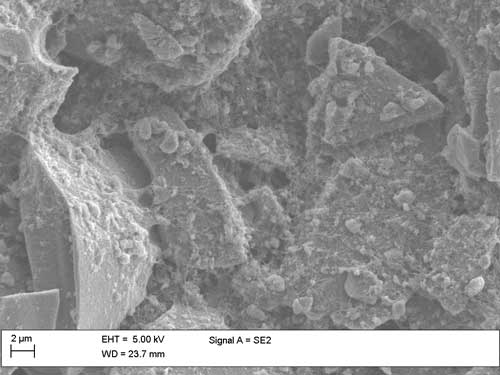| Apr 21, 2020 | |
New hybrid nanomaterial improves the performance of silicon in Li-ion batteries(Nanowerk News) States and companies worldwide are eagerly looking for new and sustainable technologies to achieve climate neutrality in every sector of society, ranging from transportation and production of consumables to energy production. |
|
| Once green energy is produced, it needs to be stored before it can be used in portable applications. In this step, battery technology plays an essential role in making the consumption of green energy a viable alternative. | |
| In the future, silicon will gradually replace carbon as the anode material in Li-ion batteries (LIBs). This development is driven by the fact that the capacity of silicon is ten times higher than the capacity of graphite, which is nowadays used as the anode material in LIBs. Using silicon in the anode makes it possible to even double the capacity of the total battery cell. | |
| However, silicon is facing severe challenges in battery technology due to its unstable material properties. Moreover, there is no technology available so far to produce feasible anodes solely from silicon. | |
| To minimise the reducing effect of high charging rates on the capacity of silicon anodes, researchers from the University of Eastern Finland have developed a hybrid material of mesoporous silicon (PSi) microparticles and carbon nanotubes (CNTs). | |
 |
|
| SEM image of hybrid anode material. Mesoporous silicon microparticles are bound together with carbon nanotubes at multiple points. (Image: Timo Ikonen) | |
| According to the researchers, the hybrid material needs to be realised through chemical conjugation of PSi and CNTs with the right polarity so as to not hinder the diffusion of lithium ions into silicon. With the right type of conjugation, also the electrical conductivity and mechanical durability of the material was improved. | |
| Further, the PSi microparticles used in the hybrid material were produced from barley husk ash to minimise the carbon footprint of the anode material and to support its sustainability. Silicon was produced through a simple magnesiothermic reduction process applied to the phytoliths that are amorphous porous silica structures found in abundance in husk ash. | |
| The findings were published in Scientific Reports and Materials Chemistry and Physics ("Cascading use of barley husk ash to produce silicon for composite anodes of Li-ion batteries"). | |
| Next, the researchers are aiming to produce a full silicon anode with a solid electrolyte to address the challenges related to the safety of LIBs and to the unstable solid electrolyte interface (SEI). | |
| “The progress of the LIB research is very exciting, and we want to contribute to the field with our know-how related to mesoporous structures of silicon. Hopefully, the EU will invest more in the basic research of batteries to pave the wave for high performance batteries and to support the competitiveness of Europe in this field. The Battery 2030+ roadmap would be essential in supporting this progress,” Professor Vesa-Pekka Lehto from the University of Eastern Finland notes. |
| Source: University of Eastern Finland (UEF Viestintä) | |
|
Subscribe to a free copy of one of our daily Nanowerk Newsletter Email Digests with a compilation of all of the day's news. |
